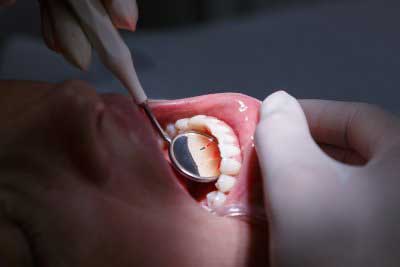Causes and Treatments of Receding Gums

Receding gums can be caused by many factors, including gum disease in Westlake. While periodontal disease is a leading cause of gum recession, aggressive brushing or teeth grinding may also contribute. If your gums have begun to pull back from your teeth, a dentist can offer different treatments, depending on the extent of the gum recession and your overall health. Keep reading to learn more about common causes of receding gums and how a deep cleaning or surgical care may be able to reverse the damage.
Common Causes
Gum disease, or gingivitis, occurs when plaque builds up between the teeth and on the gum line. When bacteria accumulate, the gums become infected and begin to pull away from the teeth. Receding gums can expose the tooth’s root and even cause the teeth to fall out. However, receding gums are not caused by periodontal disease alone. If your dentist has advised you that you brush your teeth too hard or grind your teeth at night, you may also have a receding gumline.
Deep Cleaning
If you have a moderate gum recession, your dentist and periodontist may suggest a deep dental cleaning. This special cleaning is known as scaling and root planing and is usually recommended for gum recession caused by periodontal disease. During this procedure, your dentist will use an ultrasonic scaling device to eliminate bacteria with sonic vibrations. This device eliminates tartar and plaque that has built up beneath the gum line. This deep cleaning reduces inflammation in the gum tissue that has caused the gums to recede.
Surgical Care
For gums that have receded significantly, a dentist may suggest surgical intervention. A gum graft can protect your teeth from further recession. Exposed tooth roots can not only look bad, they can result in serious sensitivity, especially to temperature. With a gum tissue graft, your dentist takes tissue from the roof of your mouth and stitches it to the gum tissue surrounding the exposed root. The tissue naturally grafts and your gum tissue grows back to a healthy level.
